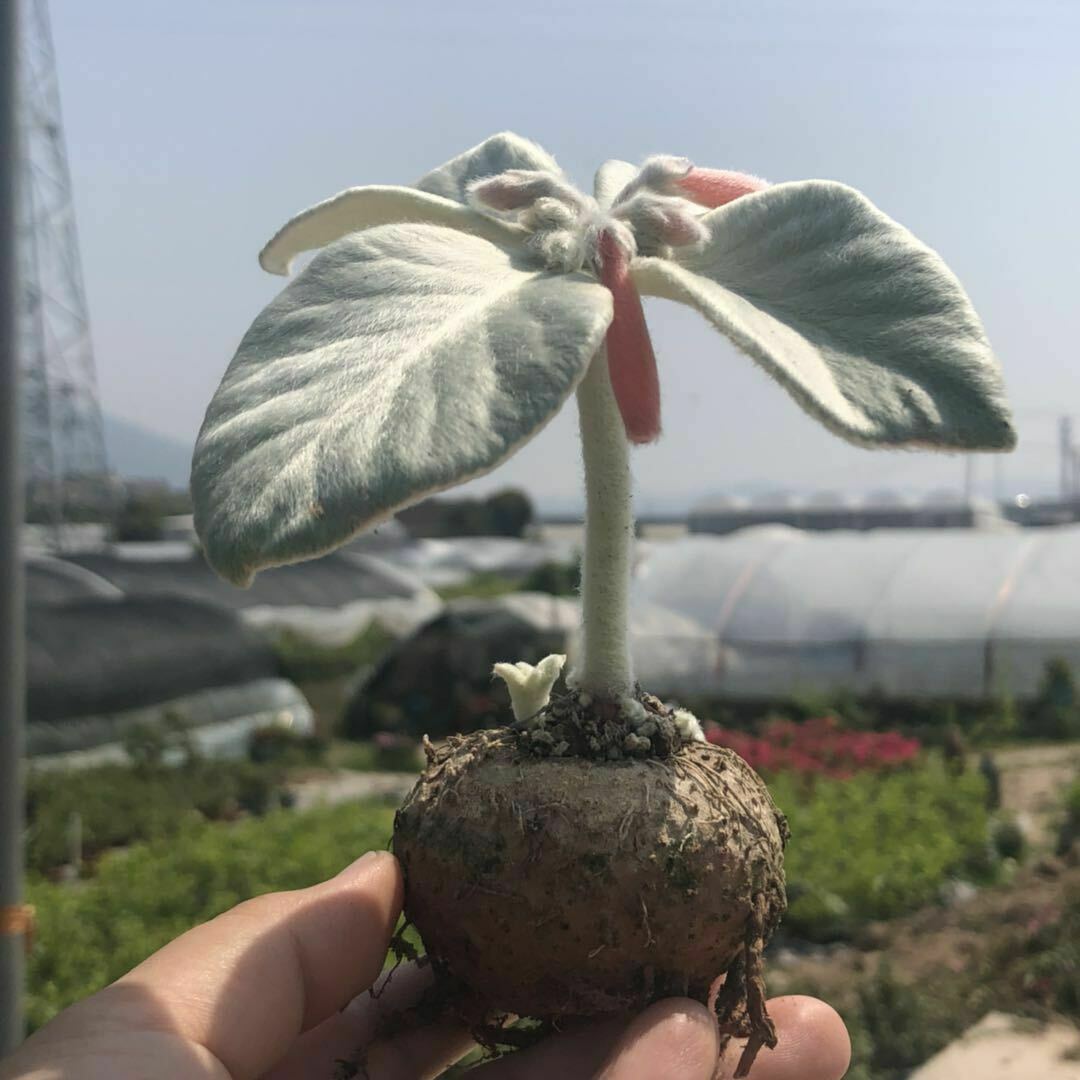Sinningia leucotricha Brazilian edelweiss is a perennial succulent herb of the Crassulaceae family, belonging to the genus Sedum. The plant has bulbous or tuberous fleshy roots with a yellow-brown surface and fibrous roots. At the top, it clusters green branches, which are 20-30cm tall, with short white hairs densely covering the surface of the branches.
The leaves are oval or elongated oval, arranged alternately on the upper part of the branches, with entire margins and pointed tips. They are green, 8 to 12 centimeters long and 4 to 6 centimeters wide, covered with thick white fuzz, giving them a glossy appearance. The flowers bloom in clusters at the top of the branches, with slender tubes measuring 3 to 4 centimeters in length and about 2 centimeters in diameter. The petals are slightly curved at the tips and are orange-red or crimson. The flower buds are covered with white fuzz. They bloom from late spring to early autumn.
Sinningia leucotricha Brazilian edelweiss thrives in sunny and cool, dry environments, tolerating partial shade but avoiding waterlogging and humid conditions. It exhibits a growth habit characterized by growth during cool seasons and dormancy during hot summers and cold winters. For most plants, the growing season spans from September to December and from March to July (though this may vary depending on environmental conditions). In sunny locations, the plants grow compactly with tightly arranged leaves.
Ideally, Sinningia leucotricha Brazilian edelweiss should be kept in a sunroom with full sunlight. During the growing season, the soil should be kept slightly moist to avoid waterlogging. A mixture of cinder, peat, and a small amount of perlite in a ratio of approximately 6:3:1, topped with clean gravel, is suitable for potting soil. Sinningia leucotricha Brazilian edelweiss can tolerate temperatures as low as about -2 degrees Celsius when the potting soil is dry, but it should not be exposed to outdoor temperatures. Throughout the winter, watering should be reduced, and watering should be stopped when temperatures drop below 5 degrees Celsius. It is advisable to maintain temperatures above 0 degrees Celsius during winter to prevent freezing damage to the bulbous roots. However, Sinningia leucotricha Brazilian edelweiss will continue to grow normally if the temperature is suitable during winter, without entering dormancy.
When temperatures exceed 35°C in summer, the entire plant's growth will basically stagnate. At this time, watering should be reduced to prevent root rot caused by excessively wet soil. Additionally, ventilation should be improved, and partial shading should be provided to prevent sunburn. Throughout the summer, it is essential to maintain these conditions. It is worth noting that during summer, watering should be reduced but not entirely stopped, as the leaves may dry up and fall off if they receive insufficient water. Watering should be done sparingly, about twice a month, pouring water only around the edges of the pot, preferably between 7-9 pm when the sun has already set to avoid affecting the plant's root system.
During cultivation, prolonged exposure to rain should be avoided to prevent stem rot. As long as the temperature is suitable, Sinningia leucotricha Brazilian edelweiss will not enter dormancy in summer and will not dry out its leaves. After the dormancy period, any dried branches should be pruned, leaving the bulb in the pot. During dormancy, watering should be minimized (though it should not be allowed to remain dormant for too long; a small amount of water should be used to awaken it as temperatures decrease). Once new leaves begin to grow from the bulb, watering can gradually resume.
Sinningia leucotricha Brazilian edelweiss grows relatively slowly and should be repotted every 2-4 years. The first repotting should be done before the first watering in early spring. Sinningia leucotricha Brazilian edelweiss is primarily propagated by sowing seeds. After the first watering in early spring, the plant will slowly produce flower buds. As a self-pollinating variety, Sinningia leucotricha Brazilian edelweiss can produce seeds on its own, but cross-pollination can enhance seed germination rates and disease resistance.
